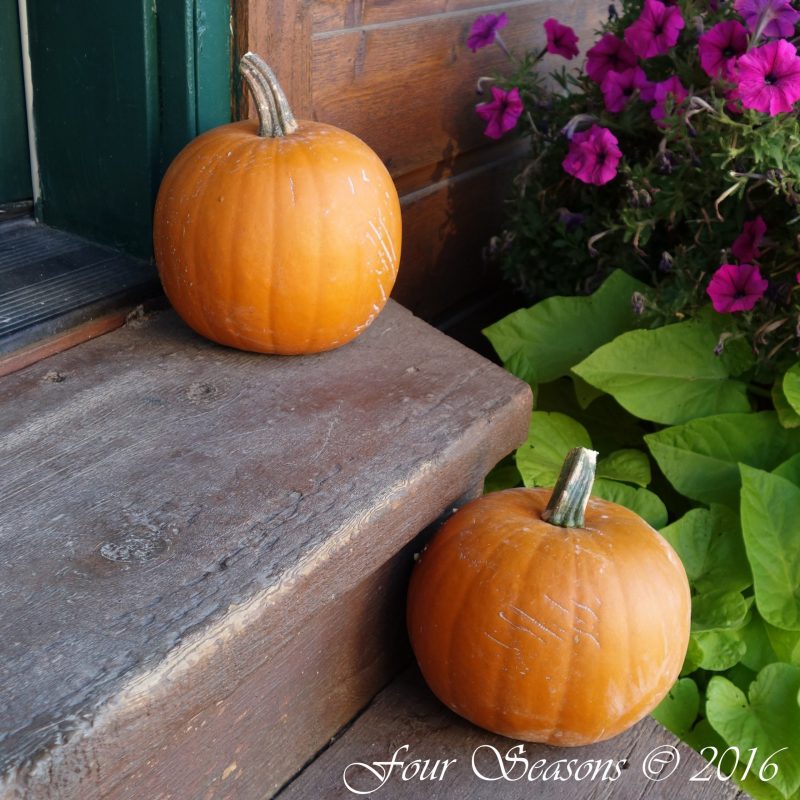Look closely and you’ll see them on most porches this time of the year. Grinning, smiling, sneering, in expressions of surprise or sorrow, jack o’lanterns have become as much a symbol of October and Halloween as trick or treaters.
It’s unclear just when pumpkins began to be carved as a symbol of Halloween. However, an old legend has it that the practice originated from an Irish myth. Supposedly there was a man who was nicknamed “Stingy Jack” who invited the Devil to have a drink with him. After having his drink, Stingy Jack didn’t want to pay for it, so he connived the Devil to turn himself into a coin that could be used to settle the bill. After turning himself into money, the Devil was put into Jack’s pocket. In that pocket, Jack also had a cross which meant the Devil could not turn himself back. Eventually the Devil was freed on the promise that he would not bother Jack for a year. The next year Jack tricked the Devil into climbing a tree. Once the Devil was treed, Jack carved a cross into the bark so that he could not come down. After promising Jack that he would not bother him for 10 years, Jack freed the Devil once again.
When Jack died, God would not allow someone who had had dealings with the Devil into heaven nor would the Devil allow someone who had tricked him so often into Hell. The Devil sent Jack off into darkness with only a burning coal to light his way through the night. Legend has it that Jack has been roaming the Earth with the coal in a carved out turnip ever since. The Irish referred to him as “Jack of the Lantern” which was later shortened to “Jack O’Lantern.”
Originally Jack O’Lanterns were not carved from pumpkins. The earliest ones came from turnips (as the original one in the legend) or from potatoes. Can you imagine trying to carve a turnip or potato? The Irish carved these vegetables with scary faces and put them in windows or doorways to frighten away Stingy Jack and other evil spirits that were supposed to wander the countryside. When the custom jumped the Channel and began in England, they used large beets. When the Irish and English began to immigrate to the United States, they brought the custom with them and soon found that pumpkins worked well for this purpose.
Carving jack o’lanterns has become a family tradition in most places and over the years the carving has evolved to an art form. The simplest ones are those we remember from our childhood- those pumpkins with triangles for eyes and a nose and a mouth carved with teeth- or perhaps missing teeth if you were not yet a skilled carver! Nowadays intricate designs are carved into pumpkins to produce almost human-like qualities in the faces that appear. Individual and interesting, no two ever seem to be the same, and there are as many ways to carve a pumpkin as there are people who carve them.
When choosing a pumpkin to carve, select one that is as fresh and ripe as possible. Even though you will not be eating this vegetable, you still should look for one that has no bruises, cuts or gashes. When you are ready to carve, choose a good, sharp knife as you’ll have less chance of injuries with one that is properly sharpened. You might also want to consider “carving” from the bottom- that is cutting the hole in the bottom and removing the seeds from there. The advantage to this is that the pumpkin will sit flat after you are finished.
Even though we often go trick or treating in the snow in this part of the world, a glowing pumpkin on a porch or doorstep always seems to add a bit of warmth to this holiday. If you love this time of the year as I do, jack o’lanterns are not scary additions to Halloween, but more like long lost friends. So scare up a few friends of your own this Halloween, go out and enjoy the parade of souls in the glowing orange faces of those pumpkins with personality!

